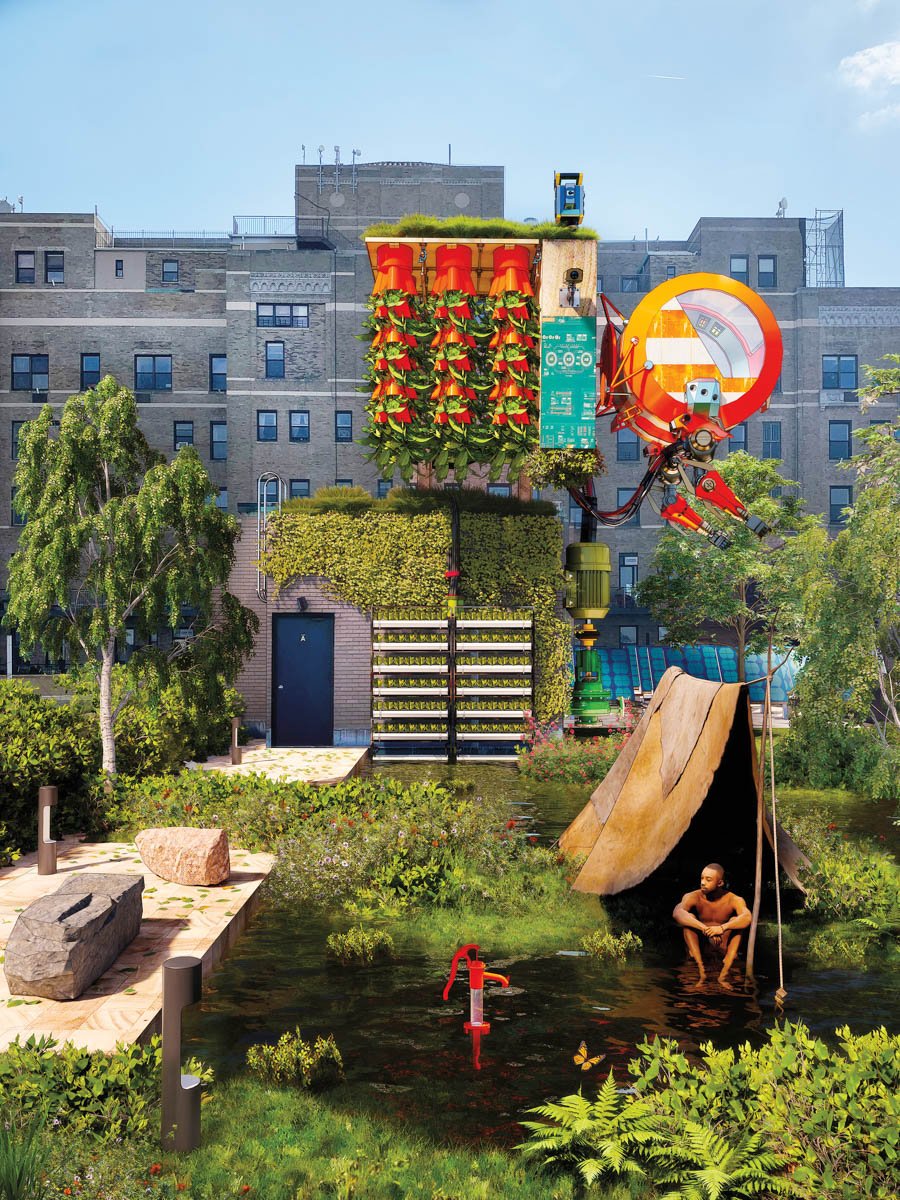
June 30, 2020
Can Quarantine Propel Us Toward Planetary Sanctuary?
Critic Mimi Zeiger reflects on refugia and the regenerative potential of crisis.
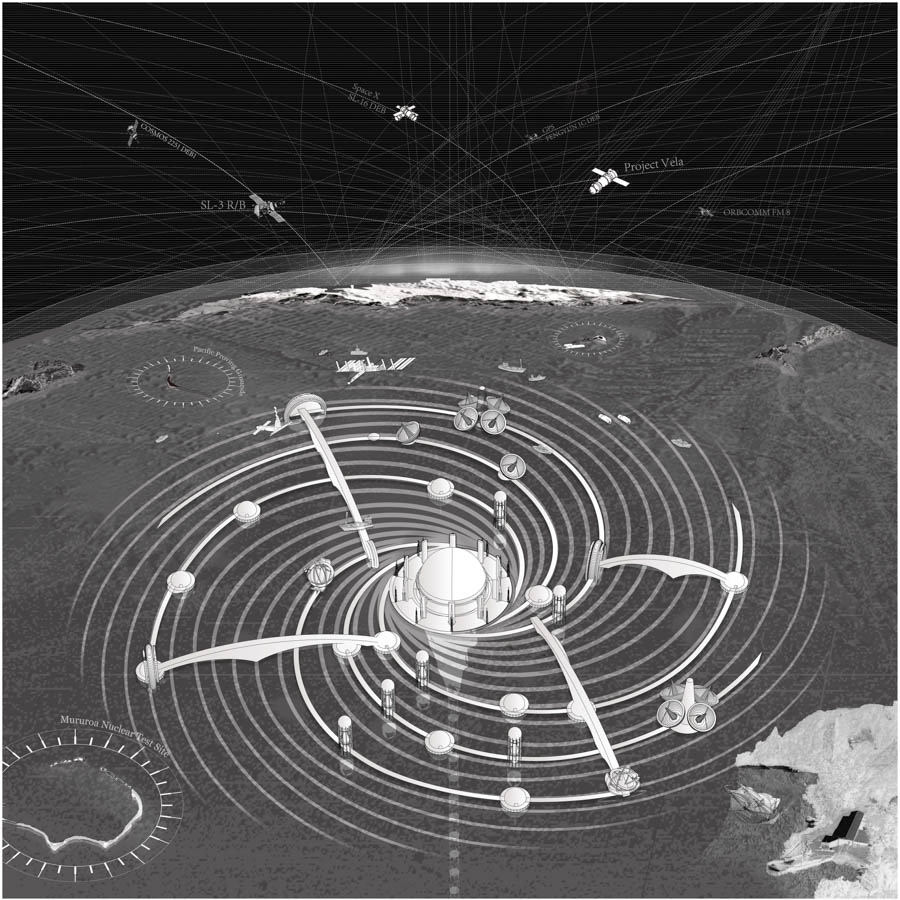
I can’t stop thinking about refugia. In the years, months, and days before the COVID-19 pandemic, the term was confined to the literature and philosophy of climate crisis, referring to pockets of life that through geographic isolation or species resilience manage to hang on in spite of the environmental forces against them. Think of clusters of Pacific Northwest barnacles nestled high on coastal outcroppings to avoid falling prey to sea snails. Or old-growth forests insulated from rising temperatures in cool mountain valleys.
As self-quarantine set in earlier this spring, the word refugia, at least for me, expanded in definition from specific ecological condition to conceptual touchstone—a necessary leap to metaphor when faced with planetary crisis. The magnitude of this pandemic falls outside human comprehension, but for the luckiest of us, refuge is manageable: a place of relative safety, of sourdough starters and online Jazzercise classes.

For humans, refuge comes at the scale of the body, of shelter, of architecture, of course. But what has become clear in this season of quarantine is that architecture’s capacity to protect is limited. Threats are ambient and pervasive, lingering in our offices, traveling through the recycled air of our 737s or the HVAC of our restaurants. And sanctuary—of all kinds—is precarious.
Refugia, though, aren’t merely about survival but also about their regenerative potential. Anthropologist Anna Tsing and ecofeminist scholar Donna Haraway both write about refugia as landscapes where species thrived into the Holocene, escaping the mass die-offs of the Ice Age. These were the robust places that allowed regrowth to happen—that enabled planetary life as we know it to rebuild.
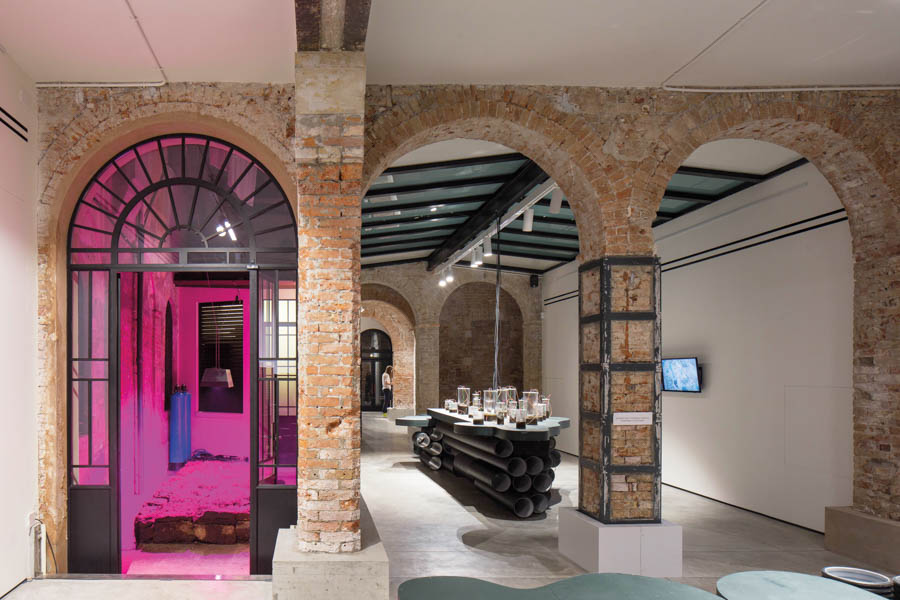
In the face of the contemporary climate crisis, the term holds the same meaning, but in the Anthropocene epoch the culprit is man-made. For decades, environmentalists, scientists, and activists have held up evidence of the destructive effects of modernity’s progress. Nature is seen as cheap and in service of global development, resource extraction, and attendant capitalism. It took a global pandemic (with possible origins linked to incursions into natural habitat) to briefly pause the momentum.
Haraway has her own term for the time we live in and our future: Chthulucene—an era in which survival is dependent on radical collaboration between humans, flora, fauna, and bacteria. “To live and die well as mortal critters in the Chthulucene is to join forces to reconstitute refuges, to make possible partial and robust biological–cultural–political–technological recuperation and recomposition, which must include mourning irreversible losses,” she wrote in a 2016 essay. Refuge is as much about grief as it is about safety. As a society, we are a long way away from memorializing, but our losses tally up: melting glaciers, massive wildfires, and, of course, deaths due to COVID-19.
The systems and structures of quarantine may be the obvious place to begin when translating refugia from an ecological to an architectural condition. A small island in the Venetian Lagoon known as the Lazzaretto Vecchio offers a 15th-century example: Its function as a quarantine isolated from Venice dates back six centuries, when plague victims filled its brick buildings and potters’ fields. A second island, the Lazzaretto Nuovo, was used to sequester crews and cargo arriving from infected ships. Boats would sit at anchor for 40 days before entering port—quarantena is “40” in Italian.
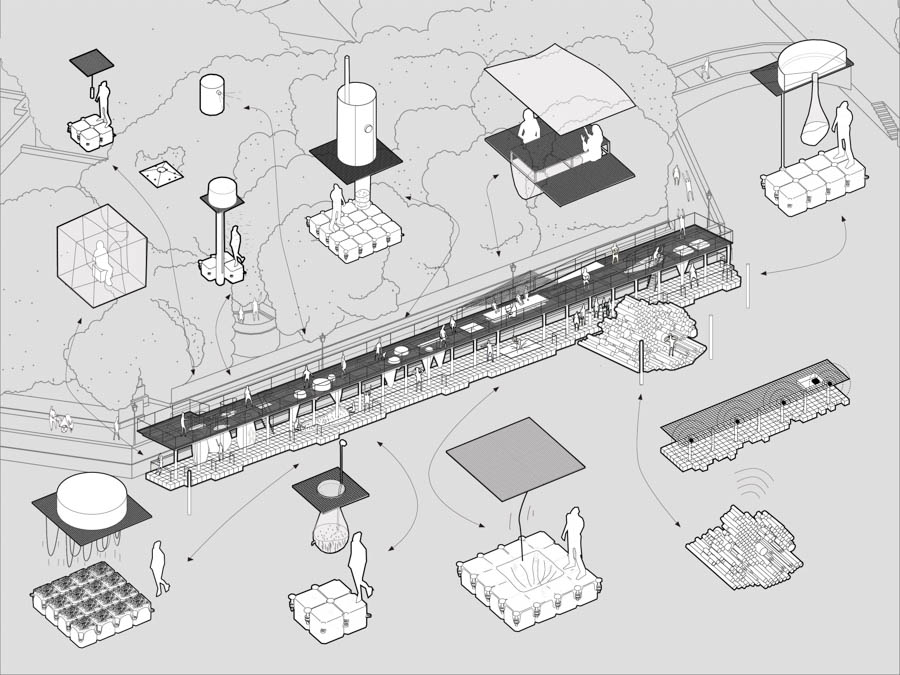
“Quarantine is inherently a state of uncertainty and ends with certainty,” says writer Nicola Twilley, who is working on a book called Until Proven Safe (MCD, a division of Farrar, Straus & Giroux) about quarantine with her partner, Geoff Manaugh. She draws a distinction between quarantine and simply secluding oneself from the world.
The concept of time—of waiting, healing, building antibodies—is woven into quarantine as much as the architecture. It’s a condition dependent on contingency: temporary, but without a release date. Twilley and Manaugh explain that physical quarantines have different entrances and exits. You enter possibly infected and leave healthy. Time, it would seem, is the hinge between what is viral and what is clean.
Twilley notes that what we think of as spatial symbols of refuge are really just cultural artifacts and bureaucratic practices meant to temper the anxiety of what is unknown: the lazarettos, temperature checkpoints, tape marks on train platforms. “These are hardened traces in an invisible war,” she says.
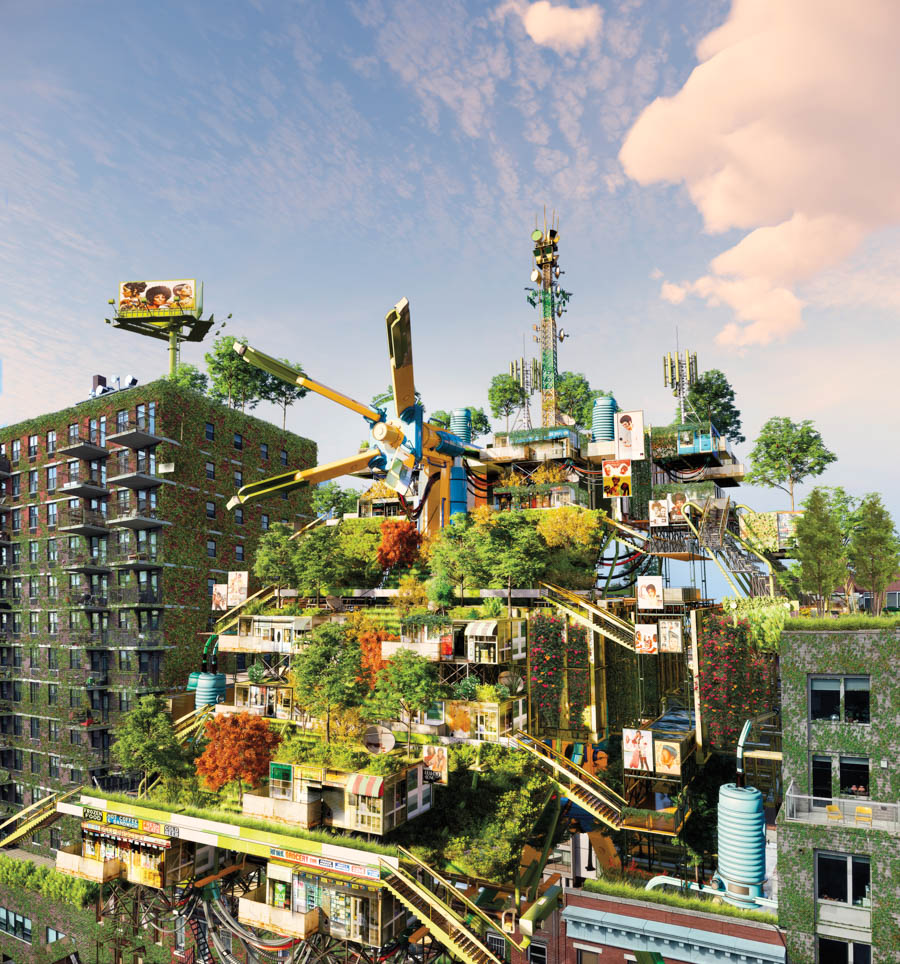
“Uncertainty has become a feature of our time, even beyond this pandemic,” says artist and MIT professor Gediminas Urbonas, who points out that urban density and expansion created the perfect milieu for the virus. Echoing Haraway, Urbonas believes that concert between life-forms offers a way forward, an idea he has explored through his work on swamps. Cocurator (with his partner Nomeda Urbonas) of The Swamp School, Lithuania’s entry in the 2018 Venice Architecture Biennale, and an editor of the upcoming book Swamps and the New Imagination (MIT Press), Urbonas is quick to reflect on these habitats—these waterlogged locales, like Venice—as refugia. “Human settlements emerged in the swamps and wetlands,” he explains. “These were perfect places for inhabiting the earth. They provided natural protection from animals and enemy tribes.”
Urbonas describes swamps as terrains that are hybrid, queer, and muddy, where “it’s not easy to parse what is solid and what is liquid.” And it is this murky character that suggests pedagogical lessons for architecture and design that go beyond the usual questions of resilience or sustainability: “How do we become amphibian?” Urbonas asks. How do we change what has fundamentally been a human-centric field and see with other eyes?
One role of architects and designers, then, is to visualize what’s probable, maybe even inevitable. While staying home in Brooklyn, artist and designer Olalekan Jeyifous embarked on a series of illustrations premised on an idea of climate apocalypse. Exercises in world building, the works grow out his project for the upcoming MoMA exhibition Reconstructions: Architecture and Blackness in America. Jeyifous took photos of empty lots, spaces above buildings, and alleyways while walking around his Crown Heights neighborhood, then digitally transformed them into micro-refugia lush with aquaponic plant life and imagined self-sustaining biotechnologies.
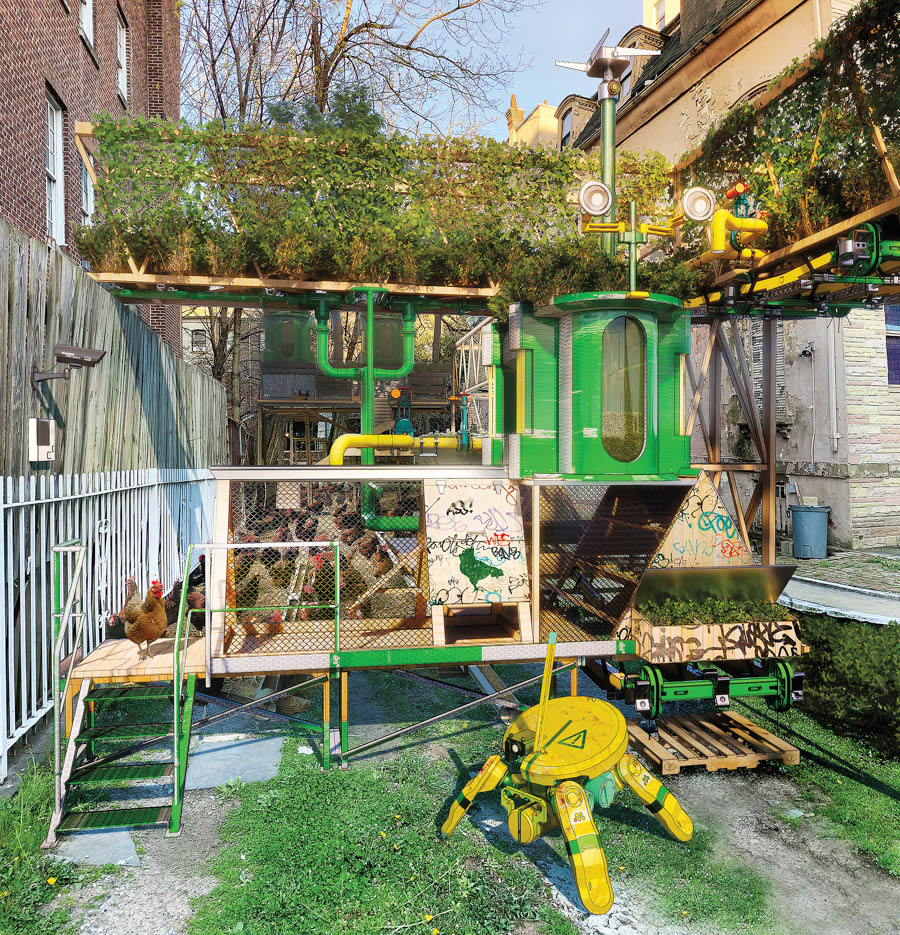
But this world—in which rooftops are piled high with foliage and cell towers, and side yards are full of chickens and solar punk robots—is not utopia. Jeyifous explains that these images envision a future of income and racial inequity based on failed systems, limited mobility, panoptic life online. Sound familiar?
“In many art spaces, architecture is still seen as problem solving,” he says. “Sci-fi always challenges. The critique expands the conversation around sociopolitical realities.”
Shifting perspective may seem either too arduous or too frivolous when the basic needs of health and shelter consume so much of our attention. Yet it’s now, while everything is in flux, that new, hybrid approaches might take root—especially since COVID-19 and the ongoing climate crisis are not just parallel emergencies but intertwined. Images of cleaner air because of reduced carbon emissions may lull us into a false sense of environmental security, but the Trump administration is in the process of reversing 100 EPA regulations and protections. We may emerge from our temporary self-quarantine to find ourselves in need of planetary refuge. Change is necessary, but like quarantine, contingent and uncertain.
“The pandemic opens up the political imagination for alternative futures—it changes everything,” says El Hadi Jazairy of the eco-speculative practice Design Earth. Before society turned to refuge, he and his partner Rania Ghosn participated in a September climate strike at Cornell calling for the university to divest from fossil fuels. They created “climate emergency declarations” in the form of banners depicting the Blue Marble’s carbon budget as a series of concentric circles. “This is the best time to push the requirements of environmental reforms. If it doesn’t happen now, it will never happen.”
You may also enjoy “The Pandemic and Protests Have Highlighted Just How Unequal Our Cities Are.”
Would you like to comment on this article? Send your thoughts to: [email protected]
Register here for Metropolis Webinars
Connect with experts and design leaders on the most important conversations of the day.
Recent Viewpoints
Viewpoints
Navigating the Path to Net Zero





